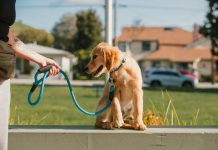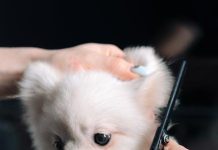Welcoming a new puppy into your home is a joyful experience filled with wagging tails, playful antics, and boundless energy. As you embark on this delightful journey, it’s important to remember that your role as a pet parent involves more than just cuddles and playtime. Ensuring your furry friend’s safety through effective training is a vital part of nurturing a happy and healthy life together. In this article, we will explore essential puppy training tips designed to keep your beloved companion safe while fostering a strong, trusting bond. From basic commands to creating a secure environment, these practical and compassionate strategies will guide you in safeguarding your pup as they explore the world around them. Let’s dive in and discover how to create a safe haven for your four-legged family member.
Creating a Safe Space for Your Puppy at Home
Bringing a new puppy into your home is a joyous occasion, but it’s essential to ensure their environment is both welcoming and secure. Start by puppy-proofing your living space. Remove any hazardous items such as electrical cords, toxic plants, and small objects that could be swallowed. Consider using baby gates to limit access to areas that might pose a risk. Create a designated puppy zone where your furry friend can explore safely. This space should include a cozy bed, a variety of toys, and a water bowl. By establishing a specific area, you can manage their safety while allowing them the freedom to play and rest.
- Secure Cords and Cables: Use cord concealers or tape them to the walls.
- Lock Away Chemicals: Store cleaning supplies and medications out of reach.
- Install Safety Gates: Block off staircases and unsafe rooms.
- Provide Chew Toys: Keep them entertained and away from furniture.
- Regularly Check for Hazards: Conduct routine sweeps for potential dangers.
Creating a nurturing environment for your puppy not only ensures their safety but also fosters a sense of security that helps them grow into confident, happy dogs. Remember, a little preparation goes a long way in providing your new family member with a safe and loving home.

Essential Commands Every Puppy Should Learn
Training your puppy with essential commands is crucial for their safety and well-being. Here are some fundamental commands that every puppy should learn:
- Sit: This command is the cornerstone of all dog training, helping your puppy to focus and calm down. It can be particularly useful in situations where you need your puppy to stay still.
- Stay: Teaching your puppy to stay is essential for their safety, especially near roads or in crowded areas. Start with short durations and gradually increase the time as your puppy becomes more comfortable with the command.
- Come: This is a lifesaver in emergencies. Make it a fun and rewarding experience for your puppy by using treats or praise, ensuring they return to you promptly when called.
- Leave it: A vital command to prevent your puppy from picking up harmful objects. Practice with toys and treats to instill the habit of letting go on your cue.
- Down: Useful for calming your puppy in exciting or overwhelming situations, the ‘down’ command helps establish your role as a leader while promoting good behavior.
Incorporating these commands into daily routines will not only keep your furry friend safe but also strengthen the bond between you and your puppy. Consistency, patience, and positive reinforcement are key to successful training.

Understanding Puppy Behavior to Prevent Hazards
In the early stages of their lives, puppies are naturally curious and eager to explore the world around them. This curiosity, while endearing, can also lead them into potentially dangerous situations. To ensure their safety, it’s crucial to understand some common behaviors that might pose risks. Puppies often chew on objects as a way to explore their environment, relieve teething discomfort, or alleviate boredom. Providing appropriate chew toys and keeping hazardous items out of reach can prevent accidents. Moreover, puppies have a tendency to dart out of open doors or chase after moving objects, which could lead to dangerous encounters with traffic or unfamiliar animals. Teaching basic commands like “stay” and “come” can be life-saving in such scenarios.
Here are some tips to manage and redirect potentially hazardous behaviors:
- Positive reinforcement: Reward your puppy for good behavior with treats, praise, or playtime. This helps reinforce desirable actions.
- Consistent training: Establish a routine and stick to it. Consistency helps your puppy understand expectations and reduces confusion.
- Supervised exploration: Allow your puppy to explore new environments under supervision to ensure their safety and comfort.
- Puppy-proofing: Secure loose wires, remove small objects, and lock away harmful substances to create a safe space for your puppy.
Understanding these behaviors and taking proactive steps can greatly reduce the risks associated with a puppy’s natural curiosity.

Socializing Your Puppy for a Confident and Secure Future
Creating a well-adjusted and secure dog begins with introducing your puppy to a variety of environments, people, and other animals. This process, known as socialization, is crucial for developing a confident pet. Start by exposing your puppy to different sounds, smells, and sights in a controlled manner. Take short walks in various settings, like parks and urban areas, to help them adapt to diverse situations. Remember to keep these experiences positive and rewarding, using treats and praise to reinforce good behavior.
- Meet and Greet: Arrange playdates with other friendly dogs and puppies. This interaction helps your puppy learn canine communication skills and reduces fear or aggression towards other dogs.
- People Skills: Invite friends and family over to meet your puppy. Encourage them to offer treats and gentle petting, helping your puppy associate people with positive experiences.
- New Experiences: Introduce your puppy to various surfaces like grass, gravel, and hardwood floors to build their confidence in different environments.
- Handling Practice: Regularly touch your puppy’s paws, ears, and mouth to prepare them for vet visits and grooming sessions.
Through consistent socialization, you nurture a dog that is adaptable and secure, ready to face the world with confidence and joy.
In Retrospect
embarking on the journey of puppy training with safety as a priority is one of the most rewarding commitments you can make for your furry friend. By implementing these tips, you’re not only teaching your puppy essential skills but also fostering a trusting and secure environment where they can thrive. Remember, patience and consistency are your best allies in this process. Celebrate the small victories along the way, and cherish the bond that grows stronger with each training session. As you guide your puppy towards becoming a well-mannered and safe companion, you are laying the foundation for a lifetime of joy and companionship. Happy training, and may your days be filled with wagging tails and happy memories!
















